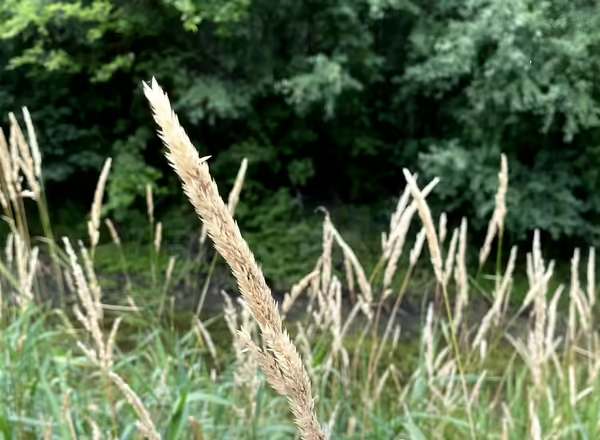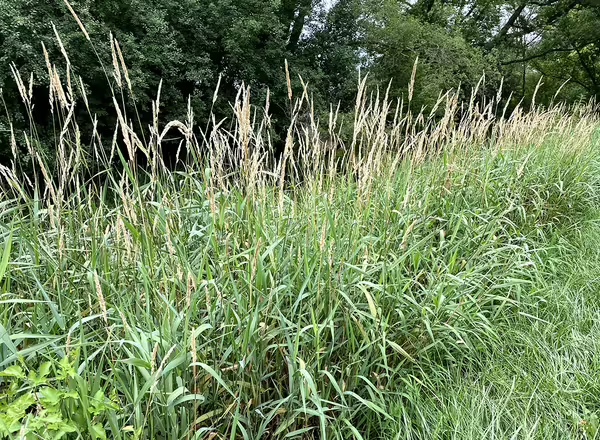
Invasive Reed Canary Grass
Reed canary grass (Phalaris arundinacea) is a cool-season grass that spreads aggressively through wetlands and prairie restorations. Reed canary grass easily forms a monoculture, shading and crowding out native plants.

History of Reed Canary Grass
Reed canary grass was introduced to the U.S. from Europe and Asia to be used as a forage grass and for erosion control.
Reed Canary Grass Regulation
Reed canary grass is not listed as an invasive species in Illinois, but at least 15 other states list it as invasive.

As a cool-season grass, reed canary grass will grow in the spring and flower late spring to early summer. It typically grows between 3 and 5 feet tall. Its leaves are about ¾ inch broad and almost 1 foot long. The foliage is a gray-green color. Leaves have a tall membranous ligule.
Reed canary grass produces a panicle inflorescence, but before it is mature and after it senesces, the inflorescence looks like a spike. The panicle is narrow, with short branches. Spikelets are densely packed onto the branches and are pointed at their tips. The inflorescence starts golden-orange and then fades to a straw color.
Learn more about how to identify grasses on the Grasses at a Glance blog.

- Mechanical removal: cut back stems to ground with small infestations.
- Chemical control: Apply 2% v/v glyphosate in water during the early spring before native species begin to emerge or just before flowering. Mowing or burning can be used as a pretreatment prior to herbicide application to remove thatch and stimulate new growth to aid in herbicide uptake. Regrowth should reach a minimum height of 18 inches before herbicide treatment. If herbicide will contact water, an NPDES permit may be necessary. Always read and follow the herbicide label before initiating treatment.